Sustainable Safety (Duurzaam Veilig)
We're very pleased to present a post by Paul James of Pedestrianise London, on the subject of Sustainable Safety - the Dutch approach to road and street design that reduces danger, and improves accessibility and mobility for all, regardless of their mode of transport.
The UK has a 1960s road network, a network designed for an age when the motor vehicle was the future of transportation, and its negative attributes were poorly understood.
Many of our streets have multiple functions - as trunk- or through-roads, often with parking, shopping, and residential property - a conflict that makes them unpleasant for anyone to use. We have created an environment where cars have come to dominate, and where living without a car for many is impossible.
This needs to change.
We need a road network that serves people, not just motor vehicles.
<
WHAT THIS MEANS
We need -
More liveable neighbourhoods
...which reduce car dependence for access to employment, retail and community facilities.
Independent mobility
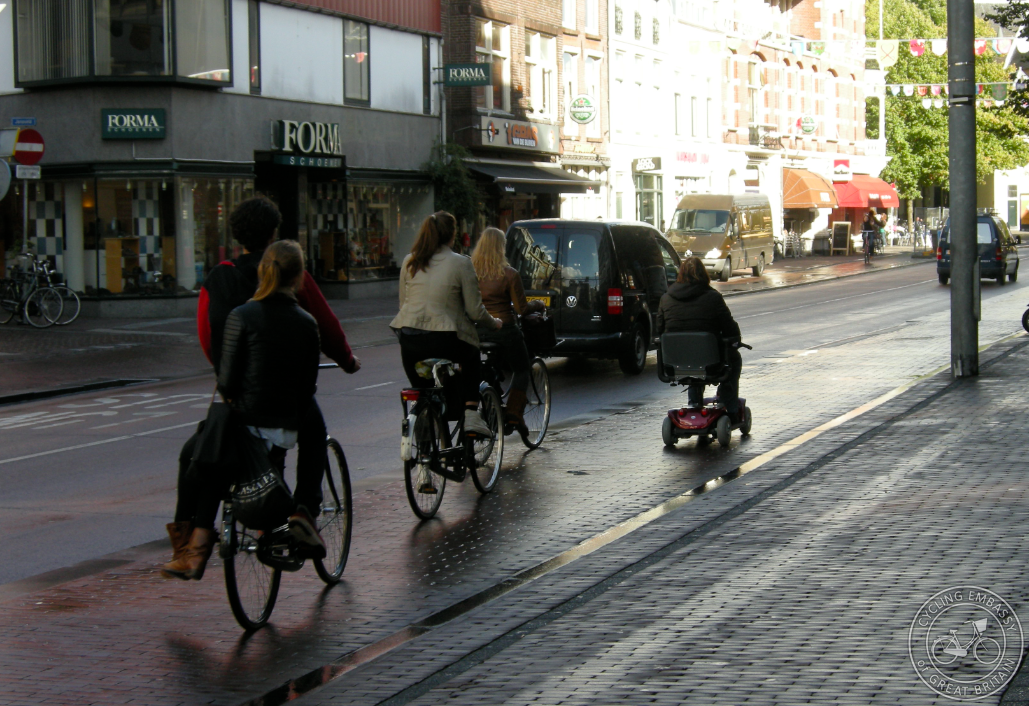
...for children and people with disabilities, including older adults, and those who cannot afford private motor transport, to enable them to walk and cycle safely and comfortably, without having to rely on others.
Opportunities for active travel

...to help improve people’s health and the environment - bearing in mind that nearly 40% of all trips under two miles are made by car in the United Kingdom.
High streets revitalised, by prioritising active transport
... Pedestrianised areas have the potential to bring about an increase in footfall for retail services of between +20% to +40%. Bikes can bring shoppers to an area without requiring large areas to be devoted to parking. One car parking space can provide space to park up to 12 bikes securely.
Remove sources of danger
Britain has some of the safest roads in the world, but this safety has come at the cost of effectively excluding walking and cycling from the network. Trends for cycling show that collisions involving cyclists are actually going up, while the perception among non-cyclists is that it is dangerous, even where the numbers are low.
We need streets that remove sources of danger, rather than excluding the vulnerable. Prevention is better than cure.
THE SOLUTION
What is 'Sustainable Safety'?
Sustainable Safety is the Dutch principle of design which makes roads and streets easy to use, self-explanatory and safe by default, preventing crashes from occurring. It consists of four core principles:
- ‘Single function’ roads
- Homogeneity of mass, speed and direction
- Instantly recognisable road design
- Forgiving environments
‘Single-function’ roads
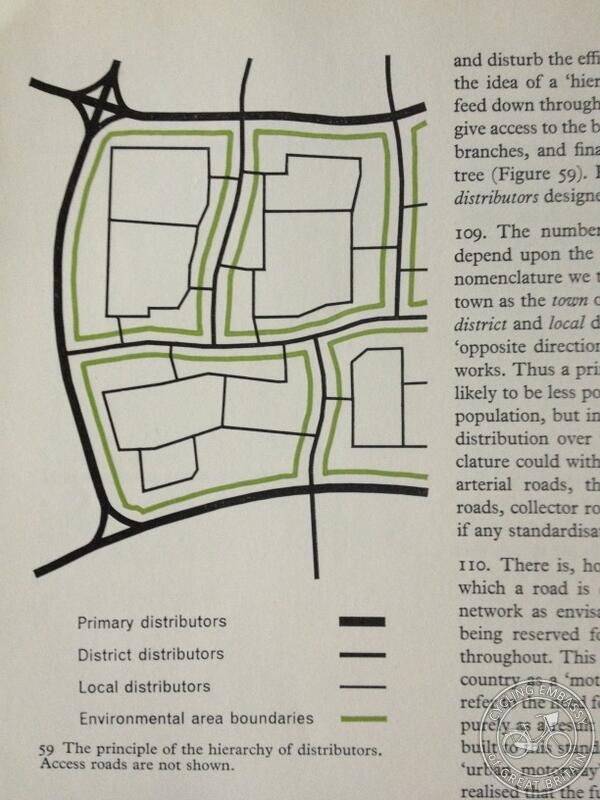 Residential areas, and areas for people (for instance, shopping, working, sport or entertainment) should not be mixed with designated space used for the flow of traffic.
Residential areas, and areas for people (for instance, shopping, working, sport or entertainment) should not be mixed with designated space used for the flow of traffic.
Each road or street should serve a single purpose: a trunk road moves large volumes of traffic; access roads allow people to get to houses, shops, schools and work places; while distributor roads join the two together. Together they form a ‘grid cell network’.
This is not a new concept - it originates with Britain's own Traffic in Towns study, from 1963 (right), albeit with roads of all category labelled as 'distributors', and with much smaller 'cells'. We need to adopt the Dutch approach of removing through traffic from residential streets, ensuring that they are safe and pleasant places.
Simultaneously we need to make our distributor roads attractive and convenient to walk and cycle along, suitable for people of any age.
A Dutch trunk road -
A Dutch distributor road -
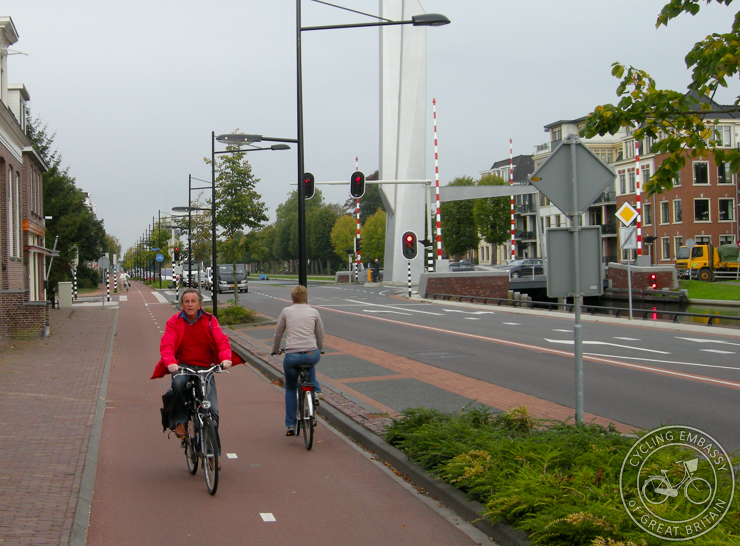
And a Dutch access road -
Homogeneity of mass, speed and direction
Roads should be designed to eliminate, as much as possible, mixing road users with large differences in speed and mass in the same space. So, for example, relatively slow pedestrians should not have to mix with relatively fast bikes, and relatively light bicycles should not have to mix with relatively heavy buses or HGVs.
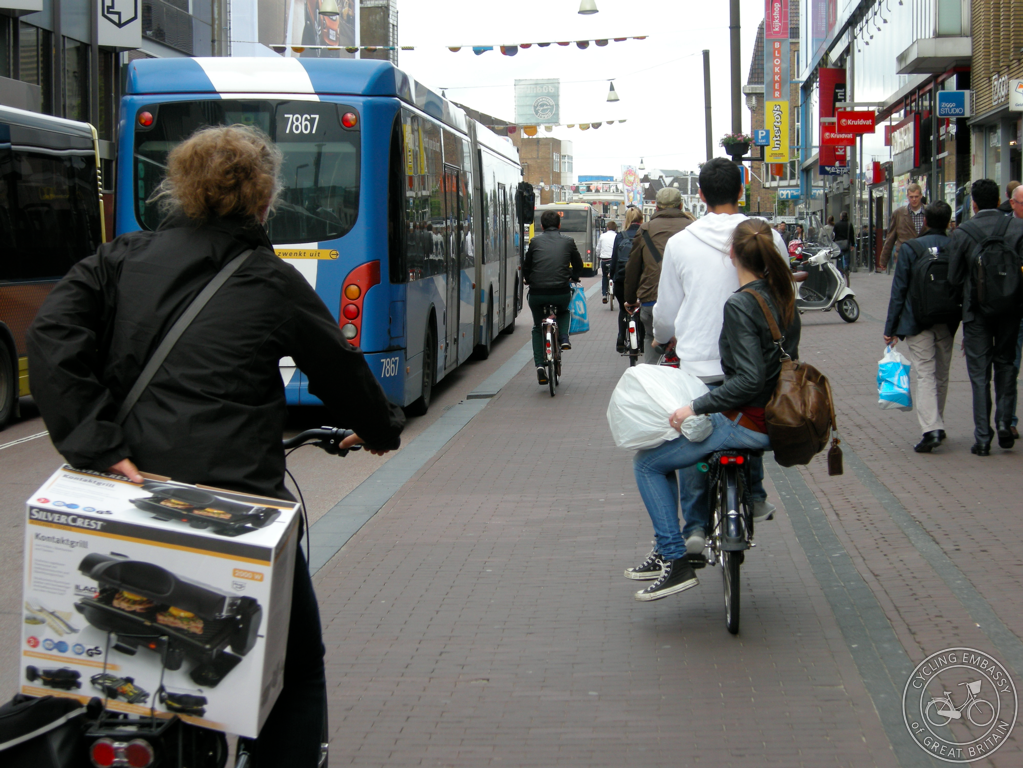
Likewise road users who travel slowly should not be expected to share space with vehicles travelling considerably faster.
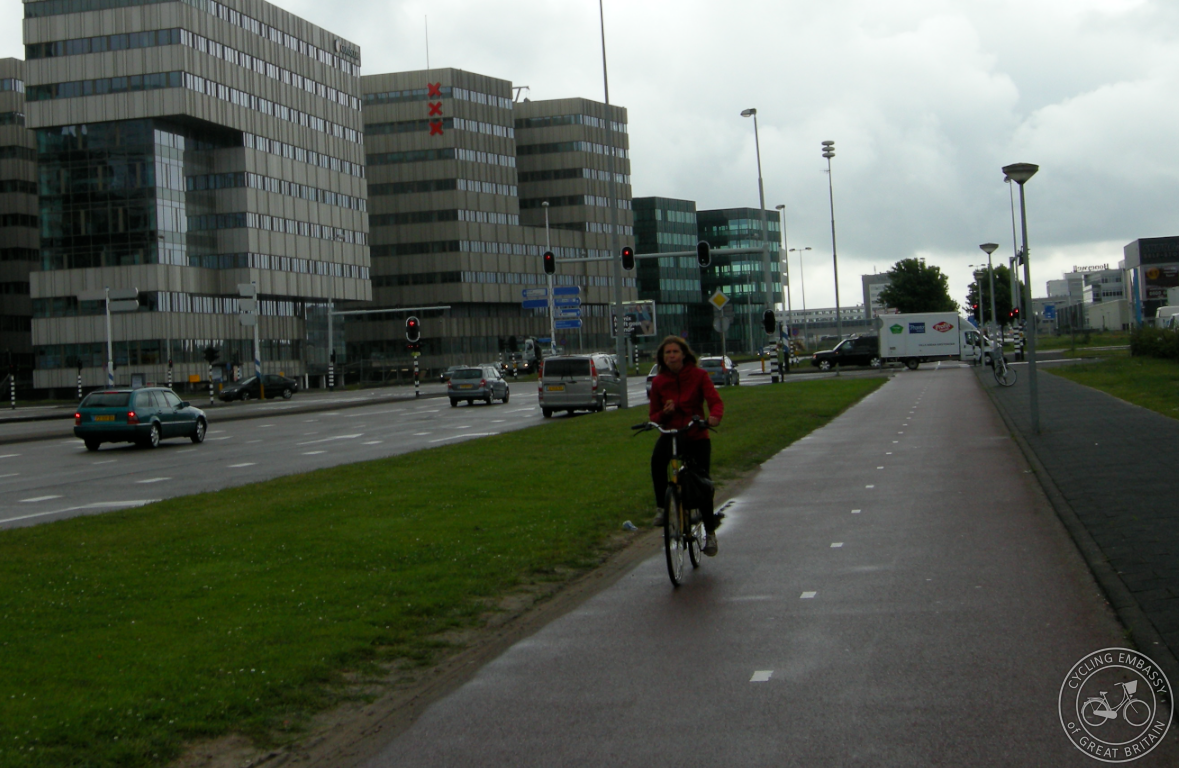
Instantly recognisable road design
Road design should be so consistent that road users instantly understand what they can expect and what is expected of them on a certain type of road. Access roads should always look like access roads, distributor roads like distributor roads, and trunk roads like trunk roads. Junctions, crossings, cycle paths, roundabouts and so on should also be consistent.
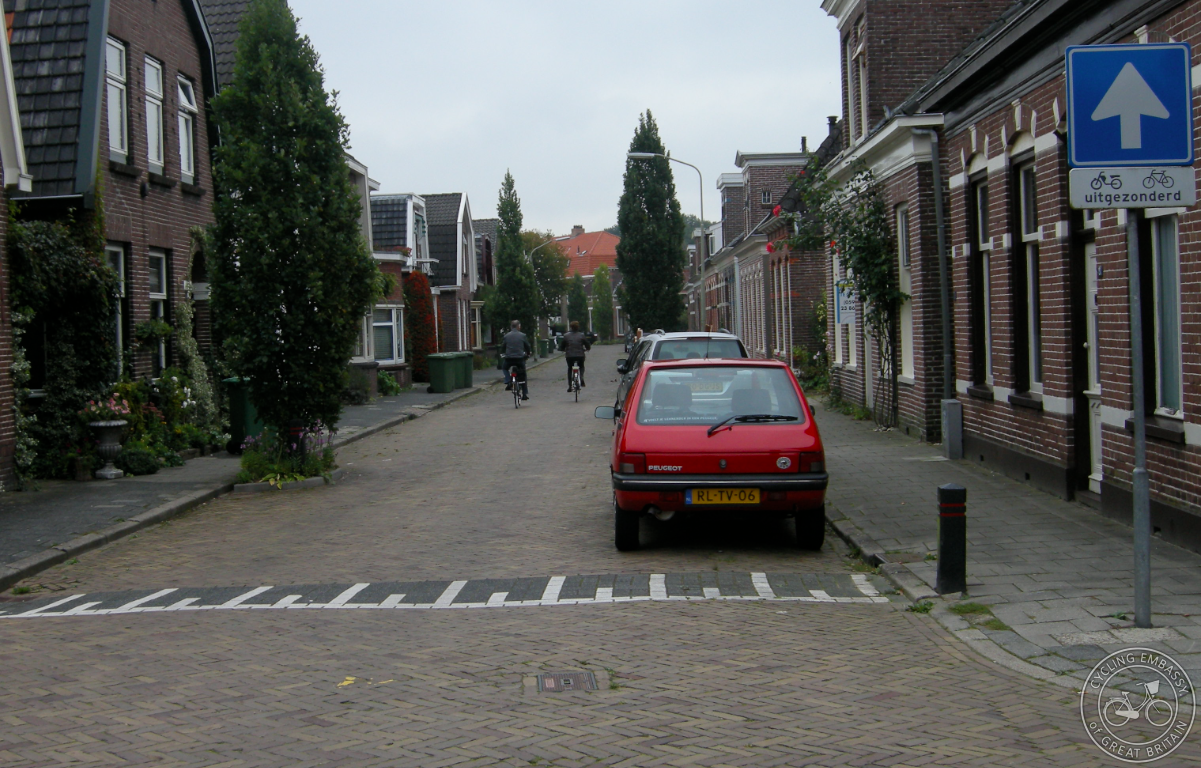
Forgiving environments - for all road users
Humans make errors and willingly or unwillingly break rules, so roads should be designed in such a way that this natural human behaviour does not lead to injuries.
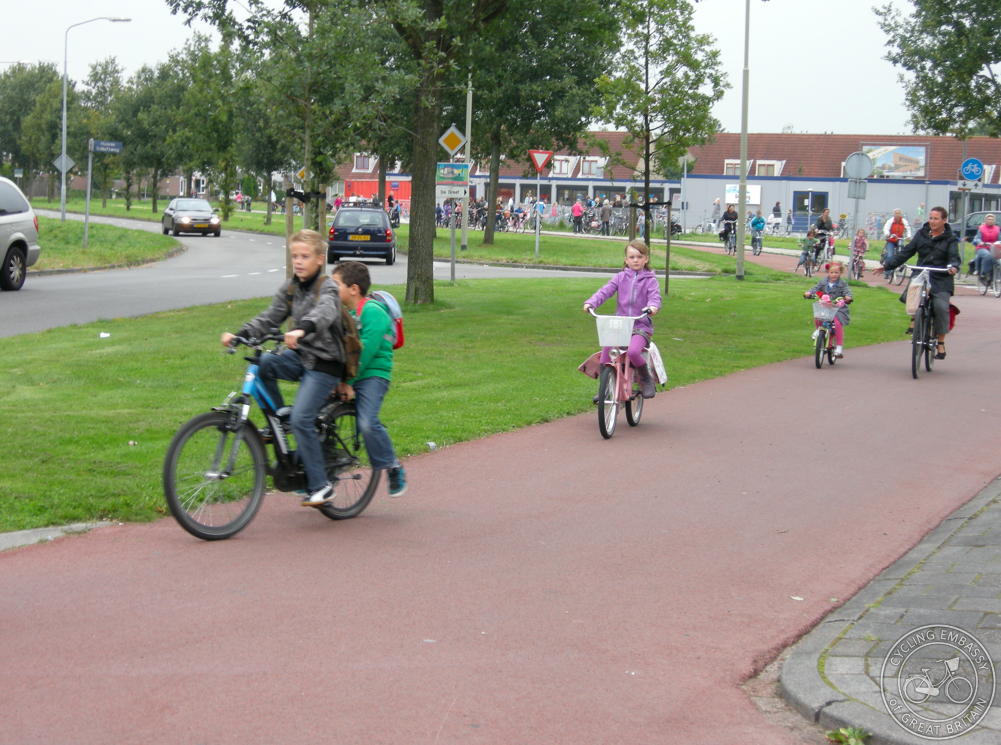
A core objective of the CEoGB is the application of Sustainable Safety principles to British roads - to make them attractive and safe for all potential users.
Find out more -
- Stichting Wetenschappelijk Onderzoek Verkeersveiligheid (SWOV) - http://www.swov.nl/rapport/Factsheets/UK/FS_Sustainable_Safety_principles.pdf
- Mark Wagenbuur, Bicycle Dutch - http://bicycledutch.wordpress.com/2012/01/02/sustainable-safety/
- David Hembrow, A View From the Cycle Path - http://www.aviewfromthecyclepath.com/2012/01/campaign-for-sustainable-safety-not.html and http://www.aviewfromthecyclepath.com/2010/01/sustainable-safety.html
- Cycling Embassy of Great Britain - http://www.cycling-embassy.org.uk/wiki/principles-separation-and-sustainable-safety
- Northeastern University, Boston - http://wiki.coe.neu.edu/groups/sustsafety/
